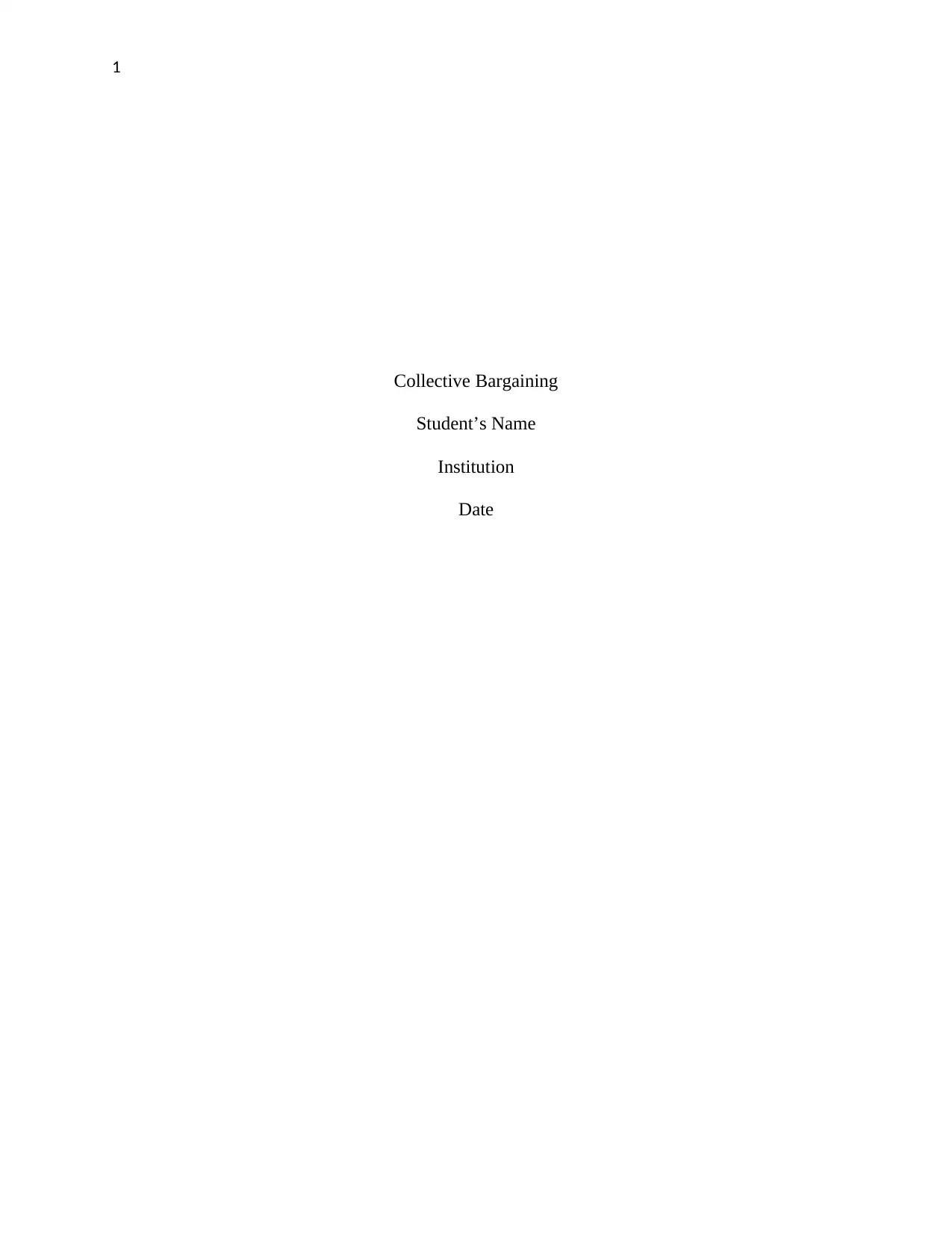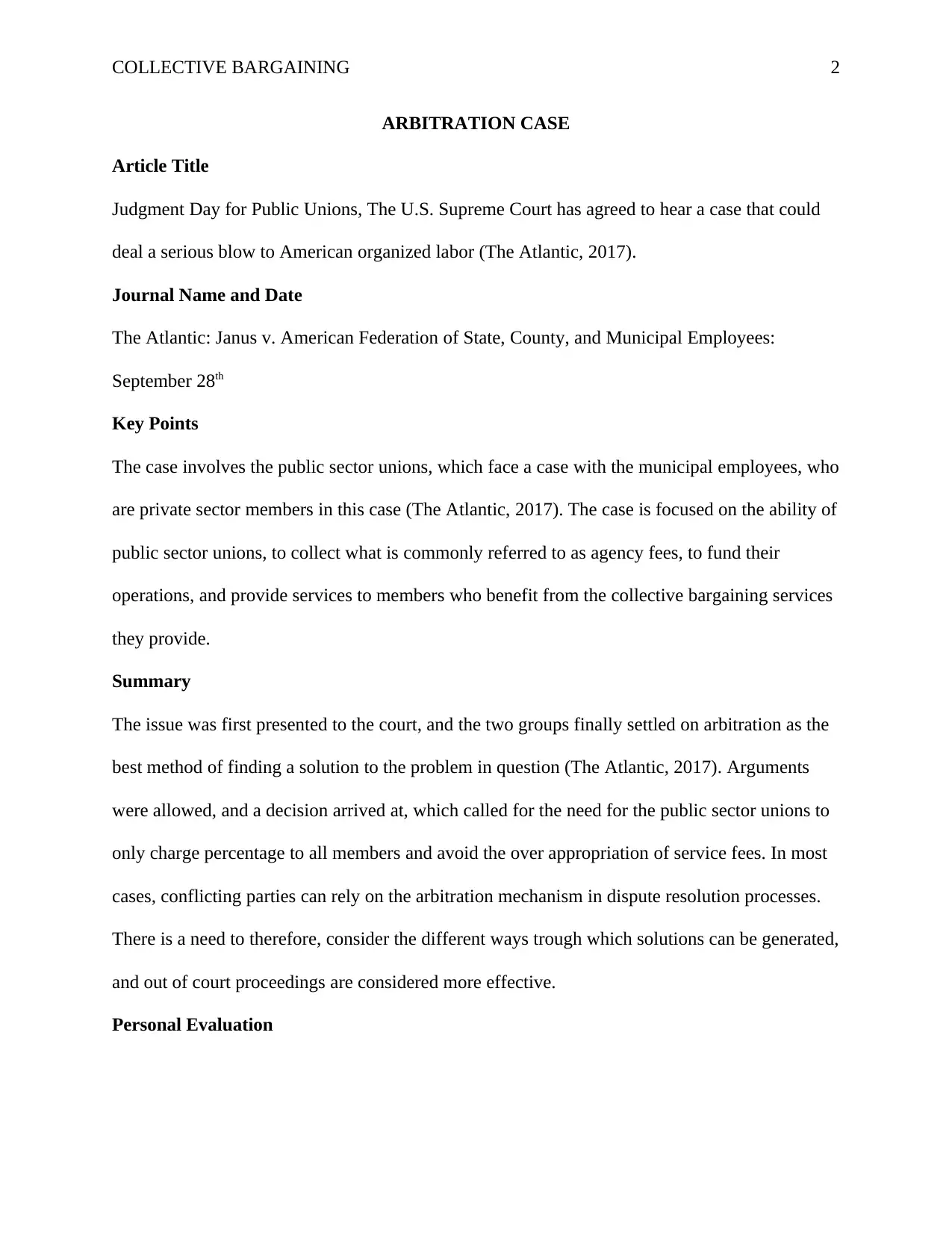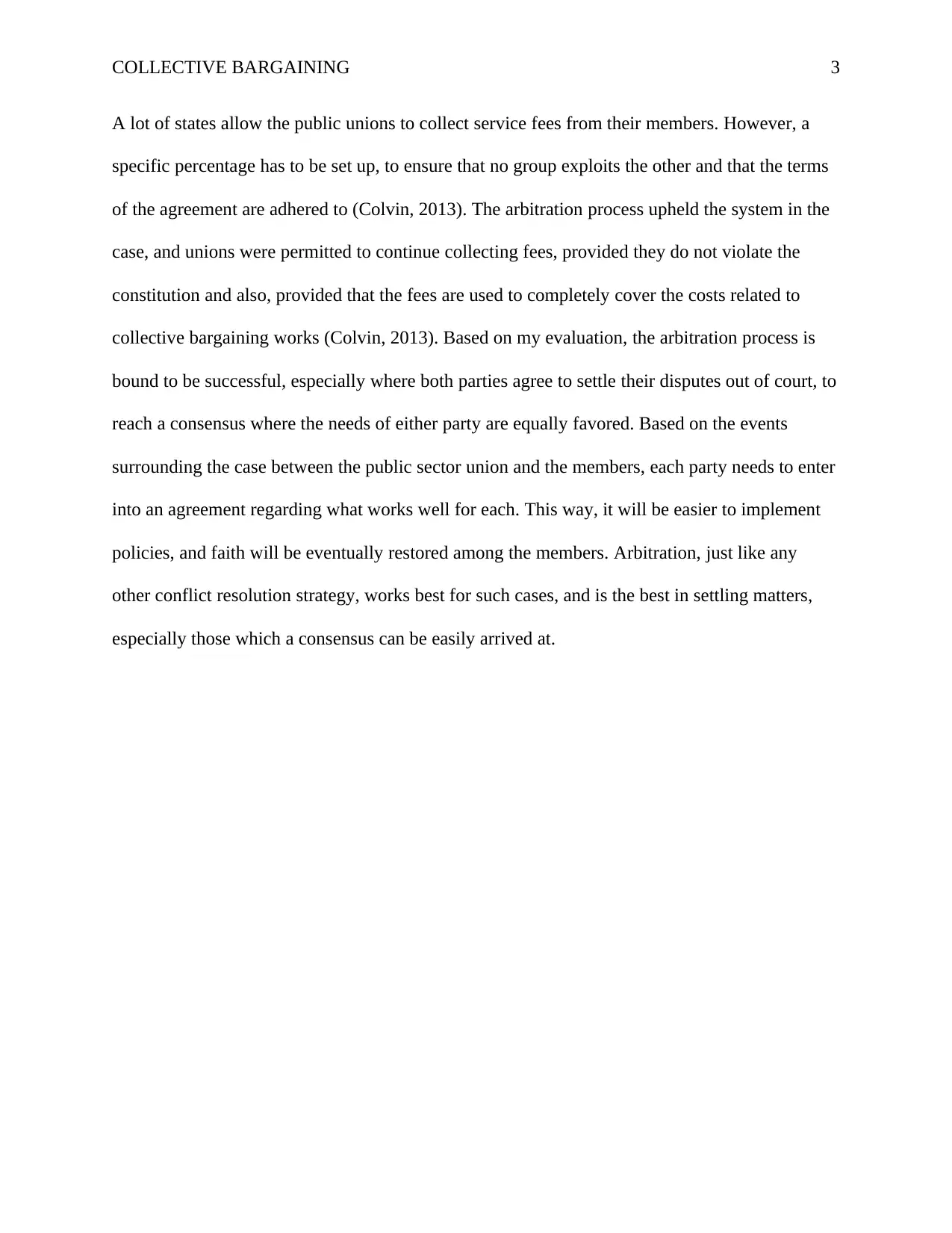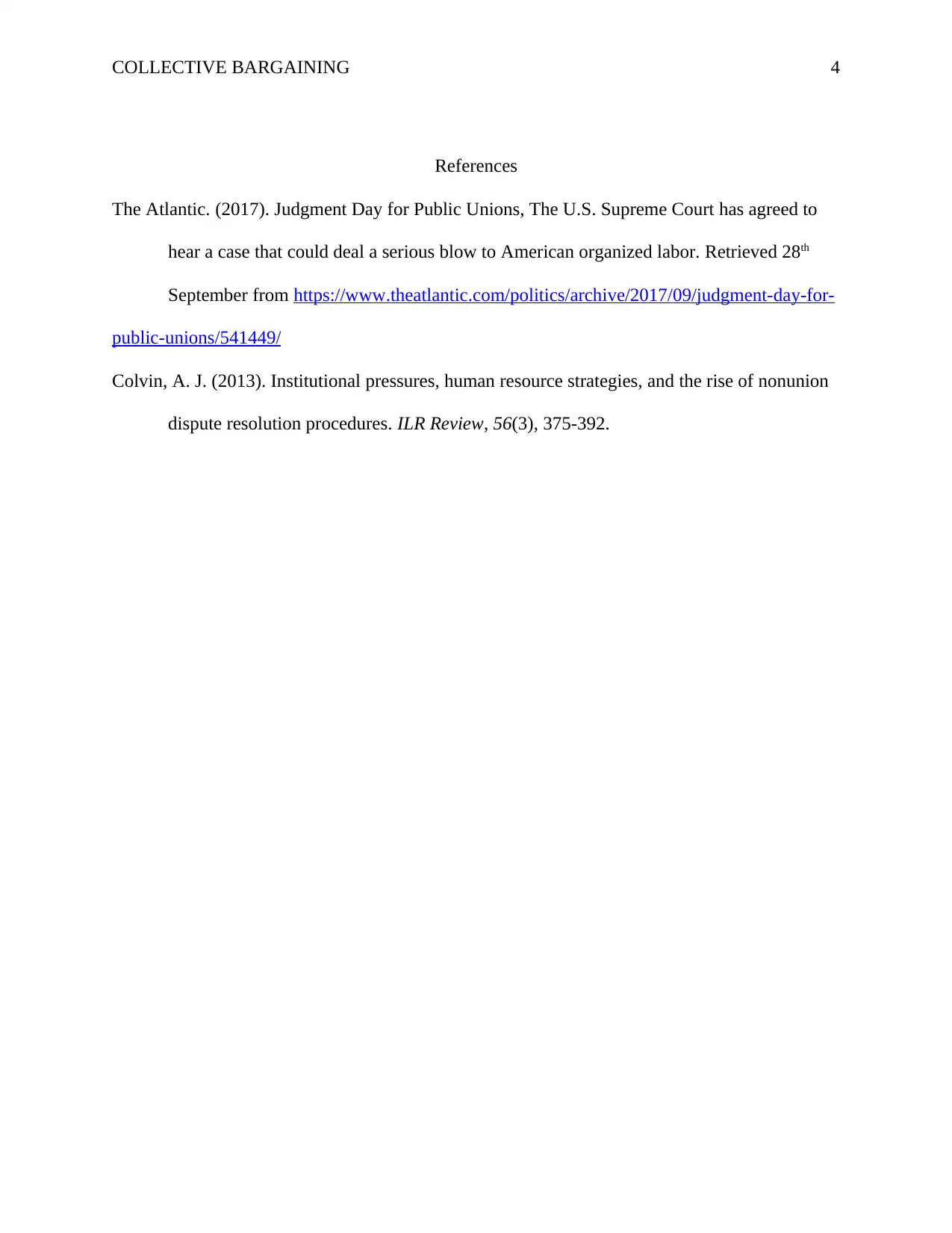Analysis of Collective Bargaining and Arbitration: A Public Union Case
VerifiedAdded on 2023/06/12
|4
|582
|278
Case Study
AI Summary
This case study analyzes an arbitration case concerning collective bargaining within public sector unions, specifically referencing the Janus v. American Federation of State, County, and Municipal Employees case. The core issue revolves around the ability of public sector unions to collect agency fees to fund their operations and provide services to members. The analysis highlights the use of arbitration as a dispute resolution mechanism, emphasizing its effectiveness in reaching a consensus where the needs of all parties are considered. The study also evaluates the balance between union rights and individual member rights, particularly concerning service fees, and concludes that arbitration can be a successful strategy when both parties agree to out-of-court settlements, leading to mutually beneficial agreements. The importance of setting specific percentages for service fees to avoid exploitation and the need for unions to use fees solely for collective bargaining costs are also discussed.
1 out of 4








![[object Object]](/_next/static/media/star-bottom.7253800d.svg)